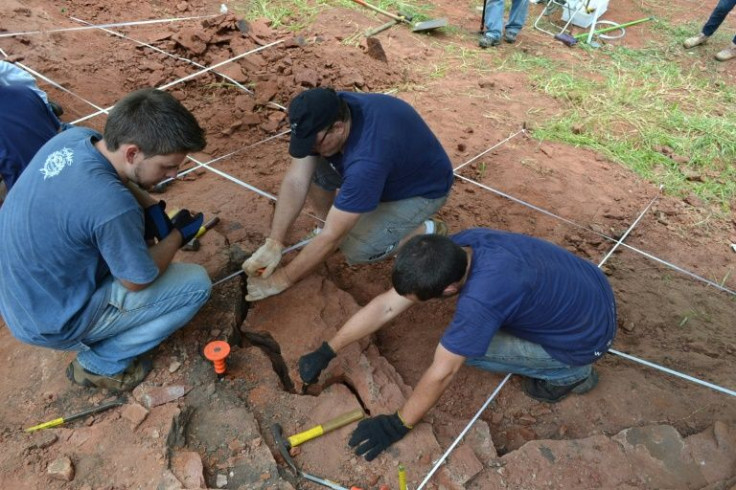First Ever Fossil To Show Live Birth In Snakes Is From 47 Million Years Ago [Photos]
KEY POINTS
- The fossil was of a snake species named Messelophis variatus
- It was a pregnant female with at least two embryos found in the trunk area
- It proves that viviparous snakes existed in the Eocene era's warmer climate
The world's first fossil displaying live birth in snakes has been unearthed at UNESCO's Messel Pit fossil site in Germany.
The discovery was led by an Argentine-German team of scientists, including Senckenberg's Krister Smith and their findings were published in the journal The Science of Nature.
The Eocene-era fossil was of a snake that measured about 0.5 m in length and is related to modern-day dwarf boas from Central America.
"Fossil preservation of reproductive events is generally very rare. In total, only two fossil records of viviparous land reptiles have been discovered to date. We have now succeeded in describing the world's first fossil evidence of a viviparous snake," Dr. Krister Smith of the Senckenberg Research Institute and Natural History Museum Frankfurt, said, reported PhysOrg.
Messel boa: #Livebirth in a 47-million-year-old snake @Senckenberg https://t.co/ozoOTdhb3F https://t.co/Jzpsp7A3sK
— Phys.org (@physorg_com) November 15, 2022
The fossil was of a species named Messelophis variatus, which comes from a family of boa-like snakes.
"The species is among the most common snakes known from Messel. Nevertheless, this specimen, which is about 47 million years old, surprised us: it is a pregnant female with at least two embryos found in the posterior third of her trunk area," lead author Dr. Mariana Chuliver from the Fundación de Historia Natural in Buenos Aires, said.
On examining the fossil remains, it was found that some of the skull bones were of small boas about 0.2 m in length, and the way they were positioned strengthened the team's assumption that the bones were not that of a meal the snake last had but were of its embryos.
📣 #Forschungsnews: 1. Fossil lebendgebärender Schlange entdeckt! 🐍 Ein Team mit Senckenberger Krister Smith weist in #Messel eine 47 Mio Jahre alte Boa mit Embryonen im Bauch nach. Lebendgeburt statt Eierlegen gab es bei Reptilien also schon damals.
— SENCKENBERG (@Senckenberg) November 14, 2022
👉 https://t.co/LEiHeIr6pi pic.twitter.com/HJk9T7Dl3c
"These bones were located quite a distance behind the stomach—if they were part of the snake's prey, they would have already been digested this far back in the intestine and would no longer be recognizable. Thus, they must represent the boa's embryos." co-author Dr. Agustín Scanferla said, according to PhysOrg.
"The fact that the bones are from very young snakes, yet already further developed than in an unlaid egg, supports the assumption that we are dealing with a pregnant, viviparous female here," Scanferla added.
This finding proves that viviparous snakes existed at least 47 million years ago.
The fact that viviparous snakes existed in the warmer climate of the Eocene period has scientists perplexed. This is so because viviparous snakes are usually found in cooler regions as having their babies fully developed within the body before birth gives the snakes a reproductive advantage in these climates. The babies can better survive the harsher climate by completing their development in the safer and warmer body of the mother.
"Why the boas gave birth to live offspring 47 million years ago in spite of this fact is still unknown. Perhaps additional fossils from this unique site will help us solve this mystery," Smith concluded.

© Copyright IBTimes 2024. All rights reserved.





















